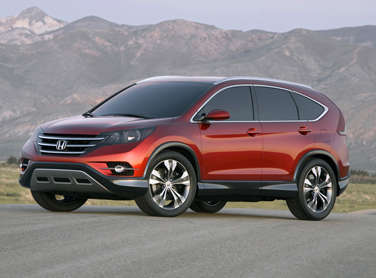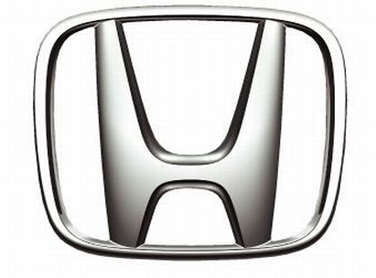Recent Articles
Popular Makes
Body Types
2012 Honda CR-V Looks Like a Sure Success

The first official image of the 2012 Honda CR-V has now been released, and even though it's technically being called a "concept," it's already clear to me from the photo that the new model looks like a vehicle that can be the top seller in its segment. And I mean that literally: The redesigned CR-V looks strikingly like a smaller version of the Chevy Traverse, currently the nation's best-selling crossover in the +200 inches category.
It's mostly the way the vehicles' beltlines rise as they get to that final side window, but that design cue is an important one as it's among the primary eye-catchers for both vehicles. Consider it another stumble for Honda's design team, a group that perhaps deserves more responsibility for the automaker's recent troubles than it's been getting.
Some Insight on Honda Design
While the automaker hasn't exactly been known as a design leader in the near-term past, Honda's reputation for quality, combined with a lack of competition in the car segments, had helped keep sales chugging along nicely for quite a while. Of course, it helped that, for years, the only credible rivals to vehicles like the CR-V, Honda Civic and Honda Accord were the Toyota RAV4, Toyota Corolla and Toyota Camry. Then came the watershed year of 2009, which saw the breakdown of the global auto industry and a steadily growing tide of Toyota recalls. And unfortunately for Honda, that year also marked the introduction of the Hyundai Tucson, the first of the new-generation South Korean products that have significantly altered the industry's balance of power. More excellent vehicles from Hyundai and Kia followed, as did an ongoing string of high-quality offerings from Ford and GM.
Relatively suddenly, Honda was faced with much stiffer competition that was positioned as offering the same kind of fuel efficiency and reliability as its own vehicles. And as the other automakers' mechanical and engineering quality continued to converge with Honda's, the influence of style and design as product differentiators began to become more and more important.
At the same time, Honda was preparing to reboot its first hybrid vehicle as the 2010 Honda Insight. The company sold about 20,000 Insights in each of the past two calendar years, and Honda claimed at this year's North American International Auto Show that the car was performing in line with their expectations. But a look at the numbers make you wonder, especially in comparison with those of the Toyota Prius, which was approaching 20,000 sales a month before the disasters in Japan struck.
There are a lot of reasons behind this, and while one of them is that the Insight doesn't achieve the same EPA ratings as the Prius, that's only part of the issue. For a lot of folks, the bigger concern is that it doesn't get the same fuel-economy results as the Toyota even though it looks remarkably similar to it, which gets boiled down to "the Insight is just a less-efficient Prius."
That would be a much more difficult comparison to make if the Insight weren't begging for it by imitating the Prius' design.
Honda made a much stronger design statement with the CR-Z, but since the package was a weaker fit for its audience, it didn't help. Worse, I have some lingering concerns that Honda purposely toned down the exterior of the all-new Civic in response to the poor reception of the CR-Z.
A Civic Crisis
The previous-generation Civic was, IMHO, one of the most sophisticated-looking compacts on the market, with a modern, sculpted exterior that managed to be aggressive without stepping over the line into cartoonish. But the current model has had much of its character massaged out of it, leaving it with a dated, slightly Saturn-esque appearance that is nowhere near as nice as the Chevrolet Cruze, Ford Focus, Hyundai Elantra, Kia Forte or even the Mazda Mazda3, to name a few.
It does seem like it would be a natural match for the all-new VW Jetta, which also showcases a rather sedate exterior, but the Volkswagen's sales success owes more to its drastic price drop than its fresh sheet metal, which affordability being the Jetta's new, highly effective differentiator. But unable to offer the same massive MSRP cut, the Civic will be hard-pressed to stand out from the crowd and attract new buyers.
All of which puts a lot of pressure on the new CR-V.
What's Left for the CR-V?
The story here is a simple one: With mainstream vehicle quality approaching parity in the U.S., automakers are going to have to find new ways to capture the attention of new buyers. Fuel efficiency remains a good starting place, but reading between the lines on the 2012 CR-V material, I'm not expecting to see a major upgrade over the current model's EPA ratings of 21 mpg city/28 mpg highway/24 mpg combined. And there's no reason to believe Honda has taken the plunge and will surprise us with a hybrid CR-V.
As a result, the new Honda will have to sell mostly based on its being a new Honda—something that hasn't been working out that well in recent years.
